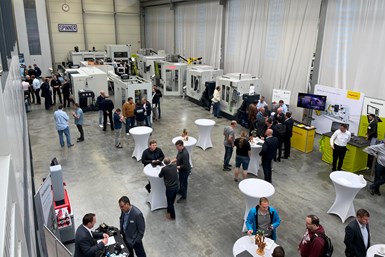
Earlier this year, Spinner hosted 700 people for an open house at its Sauerlach, Germany headquarters. (Photo credits: PM)
I admit that before attending the Precision Machined Products Association (PMPA) management update meeting held last February, I didn’t know much about the German machine tool manufacturer Spinner Werkzeugmaschinenfabrik GmbH. But during the event, I was introduced to Salim Awad, president and CEO of Spinner North America in Elk River, Minnesota, which was established in 2022.
Spinner is a known machine tool brand in Germany. It was started in Munich in 1949 by Adolf Spinner as a supplier of precision parts. In the late 1950s, the company began designing and building cam-actuated turning machines. In 1970, it moved to nearby Sauerlach, where it eventually began manufacturing CNC machine tools. Currently, the company employs approximately 300 people at its four Sauerlach assembly and production halls (it employs 670 people worldwide) and produces 1,000 machine tools annually, including CNC multi-turret turning centers, turning centers with ID and OD grinding capability and five-axis machining centers.
Featured Content
Earlier this year, I was invited to attend the company’s open house at its Sauerlach headquarters. During the event, which was attended by approximately 700 people, I spoke with Awad and Axel Spinner, company CEO, to learn more about their approach for focusing on the U.S. market anew with its CNC multifunction equipment.
Spinner explained that his company made initial effort to enter the U.S. market in the 1960s and did well with its cam-actuated turning machines. As it looked to introduce CNC equipment, it used a handful of dealers and eventually a U.S. machine tool builder to represent and support the Spinner line. Unfortunately, the sales volume never returned to the high levels experienced in the 1960s.
The creation of Spinner North America in 2022 was the first step in an effort to make another formal push into the U.S., as well as Canadian and Mexican machining markets.
Spinner says the company is focusing on the high-end, high-production segment of the North American market, targeting industries such as medical, electronic and defense. He also points to the value of sister company Spinner Automation, which launched some 25 years ago, as a means for customers to integrate automation from one source as turnkey machine-tending solutions.
Awad notes that Spinner North America is focused on having very good machine installation successes with new U.S. customers thanks in part to closer, more direct contact with those customers with its network of regional managers and their intimate knowledge of Spinner technology and select new dealers. Eventually, Spinner North America will stock replacement parts on site and create regional U.S. tech centers that will eventually be located in Canada and Mexico, he says.
In addition, Spinner North America became a PMPA member soon after the company was established. It also exhibited at IMTS 2022 with one machine and at the 2023 edition of the Precision Machining Technology Show (PMTS) with multiple machines, some having multiple turrets. “Events really give people a sense of what Spinner technology is all about,” Awad says.
I’d say the same goes for open houses such as the one I attended earlier this year. This included various machines (many fitted with automation solutions) on display in the company’s Sauerlach showroom. But we also were able to tour the four assembly and production halls there. The fourth and newest plant is fully air-conditioned and climate-neutral. With its addition, all previous machining production activities in Germany have been brought together at the Sauerlach campus, and all components for machine spindles, turrets and structural components are designed and manufactured there.
Take a gander at the photos and video below, which offer a glimpse of what I saw during the open house.
Spinner made its initial effort to enter the U.S. market in the 1960s and did well with its cam-actuated turning machines.
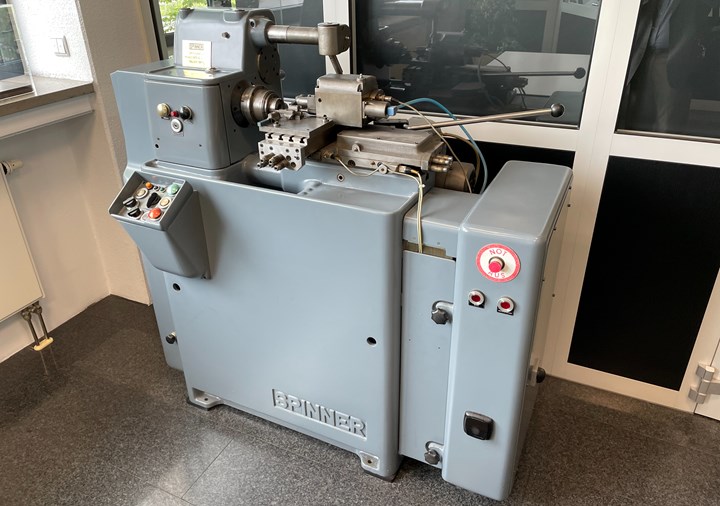
CNC platforms such as the multitasking Microturn can perform hard turning for workpieces to 60 HRc.
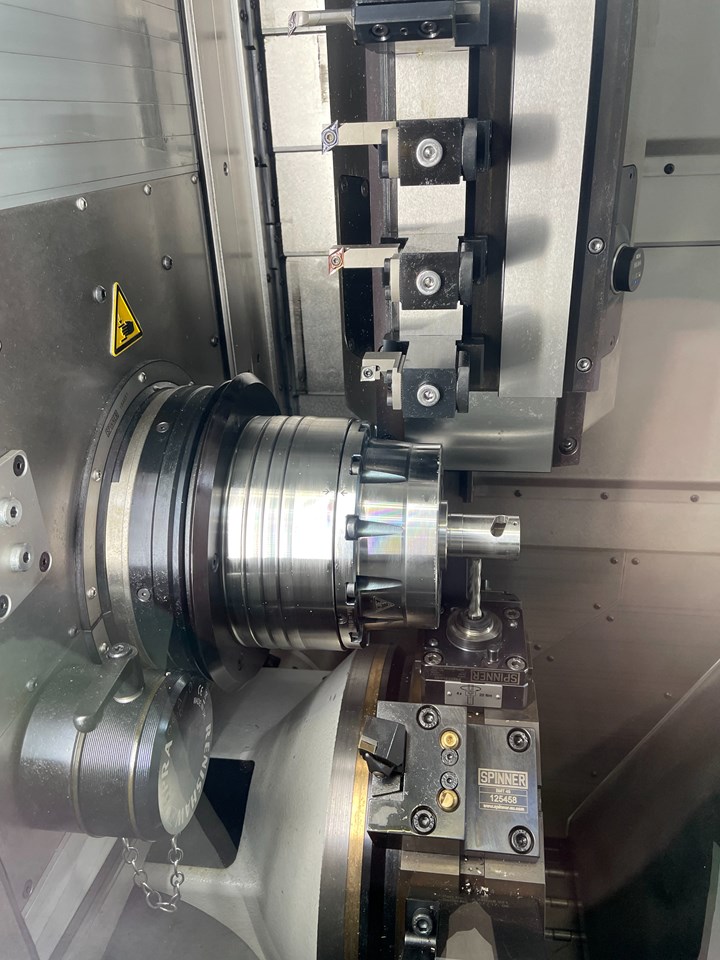
This article describes Spinner’s Microturn Grind platform. One key aspect is in-process part measurement as shown in the video below (note the dressing process at the beginning of the video).
Universal CNC lathes such as the TC610L offer long turning capacity with 16-station turrets (Y-axis optional).
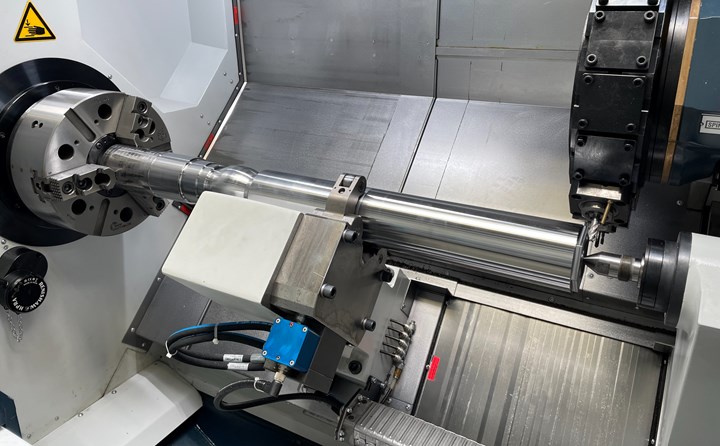
To enable increasingly more desirable unattended machining, a number of automation options are available, including bar feeders, pallet changers and custom automation solutions, through Spinner-Automation GmbH.
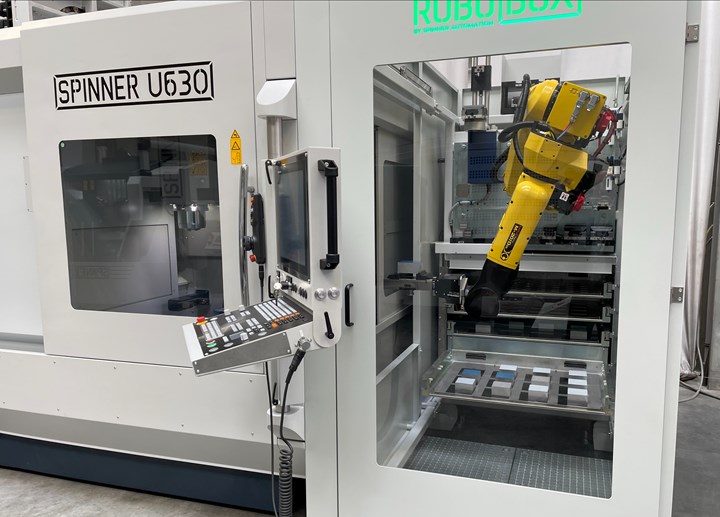
Spinner designs and manufactures spindles, turrets and machine structures in house.
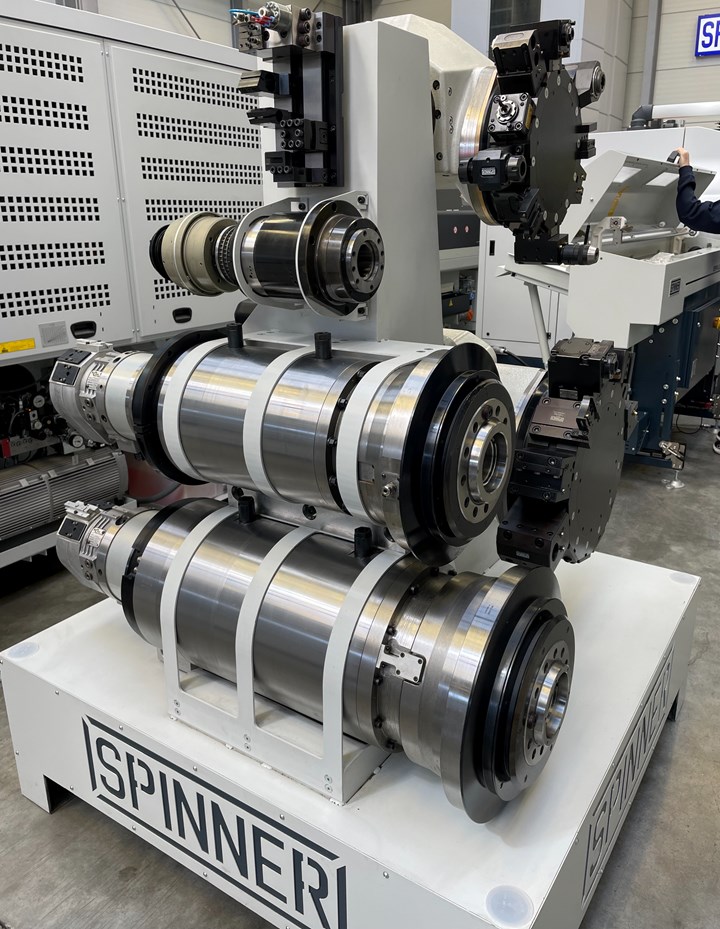
The company recently added a large five-axis Dinox 350 IAT gantry mill from Italy’s FPT Industrie for machining castings and other big components.

Here’s something you might not know: Spinner equipment such as five-axis milling machines like this feature one-piece way covers which are said to be more durable/more protective than conventional telescopic covers.
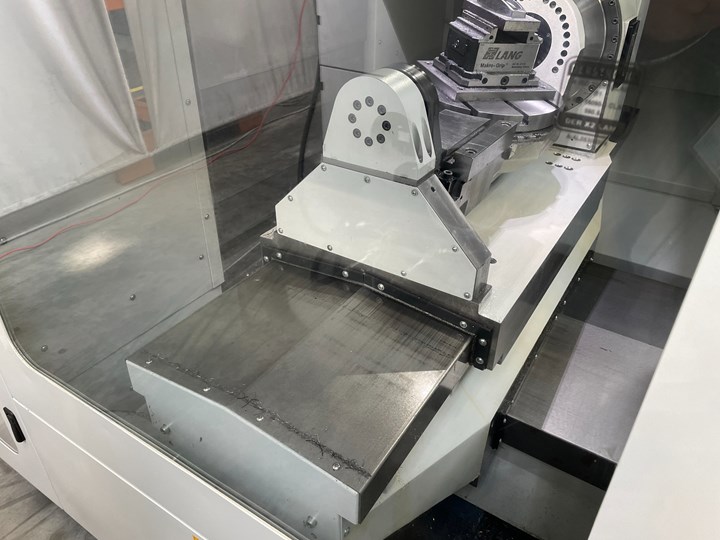
RELATED CONTENT
-
When a CNC Turn-Mill Doesn’t Turn
A shop in Big Sky Country uses a B-axis multitasking machine to produce complex, prismatic medical parts that require no turning complete from barstock.
-
A New Approach to CNC Turning
This turning process takes advantage of a turn-mill’s B-axis spindle to vary a tool’s approach angle to optimize chip control and feed rates.
-
When To Combine Milling And Turning
Turn/Mill technology enables users to complete a workpiece in a single handling. This article looks at some of the criteria that make application of this multi-tasking productive.






